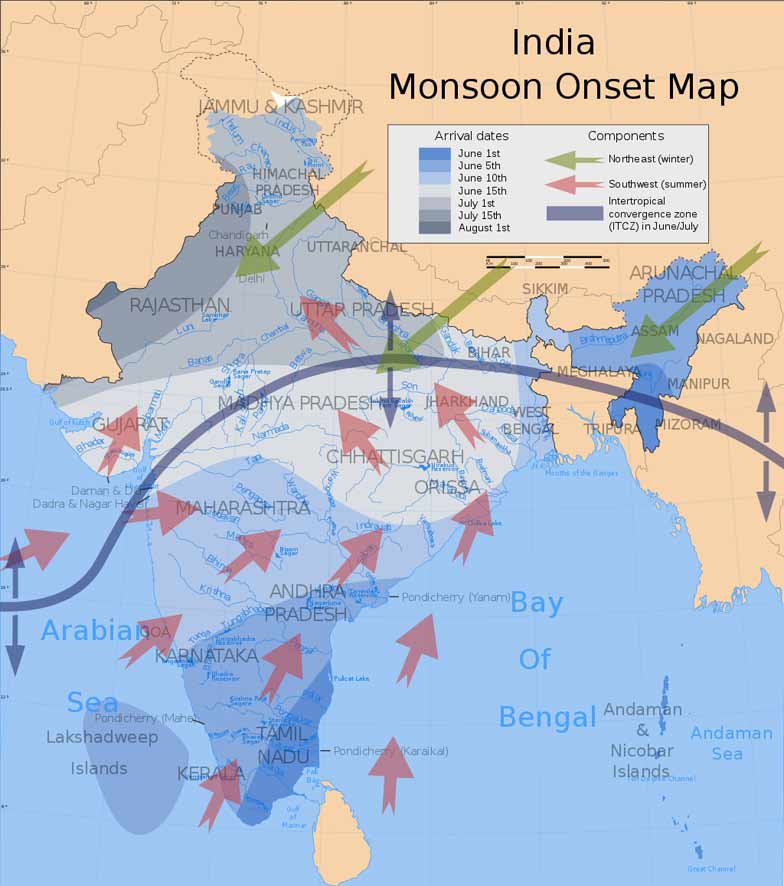The Indian monsoon system is one of the oldest in the world and plays a very important role in our economic, social and cultural spheres.
The word monsoon, derived from the Arabic word 'mausim' (season) is widely used today to refer to the seasonal reversal of winds. The monsoon brings almost 75 per cent of the country's annual rainfall.
There are two monsoon systems in India, the south-west monsoon and the north-east monsoon.
The onset of the north-east monsoon and withdrawal of the south-west monsoon takes place approximately at the same time, which is why it is also known as the retreating monsoon.
The south-west monsoon
It is considered to be one of the most productive wet seasons on earth. The high temperature difference between the central Asian landmass and the Indian Ocean brings in humid air into India from the south-west. This is also accompanied by a northward shift in the Intertropical Convergence Zone (ITCZ) towards India.

The monsoon typically touches the Indian mainland around June 1 through the Kerala coast. This branch which came via the Bay of Bengal further moves towards Orissa and then turns to cover the Indo-Gangetic plain. Another branch of this monsoon also enters from the Arabian sea and travels north-east towards the Himalayas.
Travelling at an average speed of 30km/hr, within just one month it would have reached the entire country. However, while the monsoons last for around 6-9 months in south India. In the north, it only sustains for a period of 2-3 months. It is also highly erratic and unreliable in nature causing the twin problem of either flooding or drought with excess or low rainfall in some years.
 By Saravask, based on work by Planemad and Nichalp, from Wikimedia Commons
By Saravask, based on work by Planemad and Nichalp, from Wikimedia Commons
The north-east monsoon
Winters in the northern parts of Asia creates a high pressure centre of great intensity. The outflow of this cold continental air recedes towards the South and south-east, bringing rain to east Indian states, Tamil Nadu, and Sri Lanka. Thus, also known as the winter rains, it prevails from October to November.
With the fall in temperature by November, the low-pressure trough weakens and the monsoon withdraws.
Distribution of rainfall
The Indian monsoon is known for being highly erratic and uneven.
A visualisation showing the onset and the retreat of the South Asian Monsoon (by Mdmadhu, from Wikimedia Commons)
While the areas along the Western Ghats, north-east hills and the foothills of the Himalayas receive very high rainfall; places like Rajasthan, parts of Gujarat etc receive very low rainfall. The difference in distribution is due to some places being geographically located at an advantageous position than the others. For instance, places in Kerala enjoy monsoon for a longer duration compared to those in Rajasthan. Being on the windward side and not on the leeward side also affects the distribution of rainfall in an area.
Typically, the rainfall decreases from east to west in the north and south to north in peninsular India.


























 A woman stands on a seaside promenade against the background of pre-monsoon clouds gathered over the Arabian Sea in Kochi. REUTERS/Sivaram V/Files
A woman stands on a seaside promenade against the background of pre-monsoon clouds gathered over the Arabian Sea in Kochi. REUTERS/Sivaram V/Files